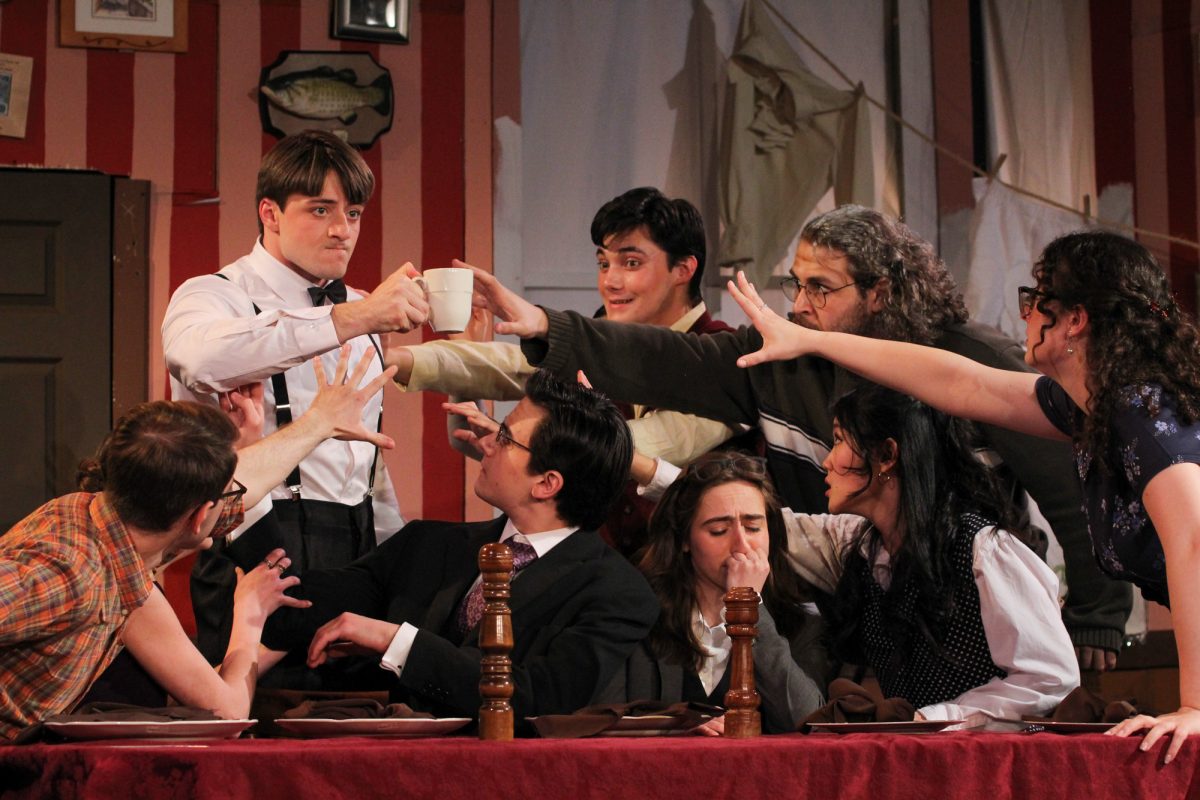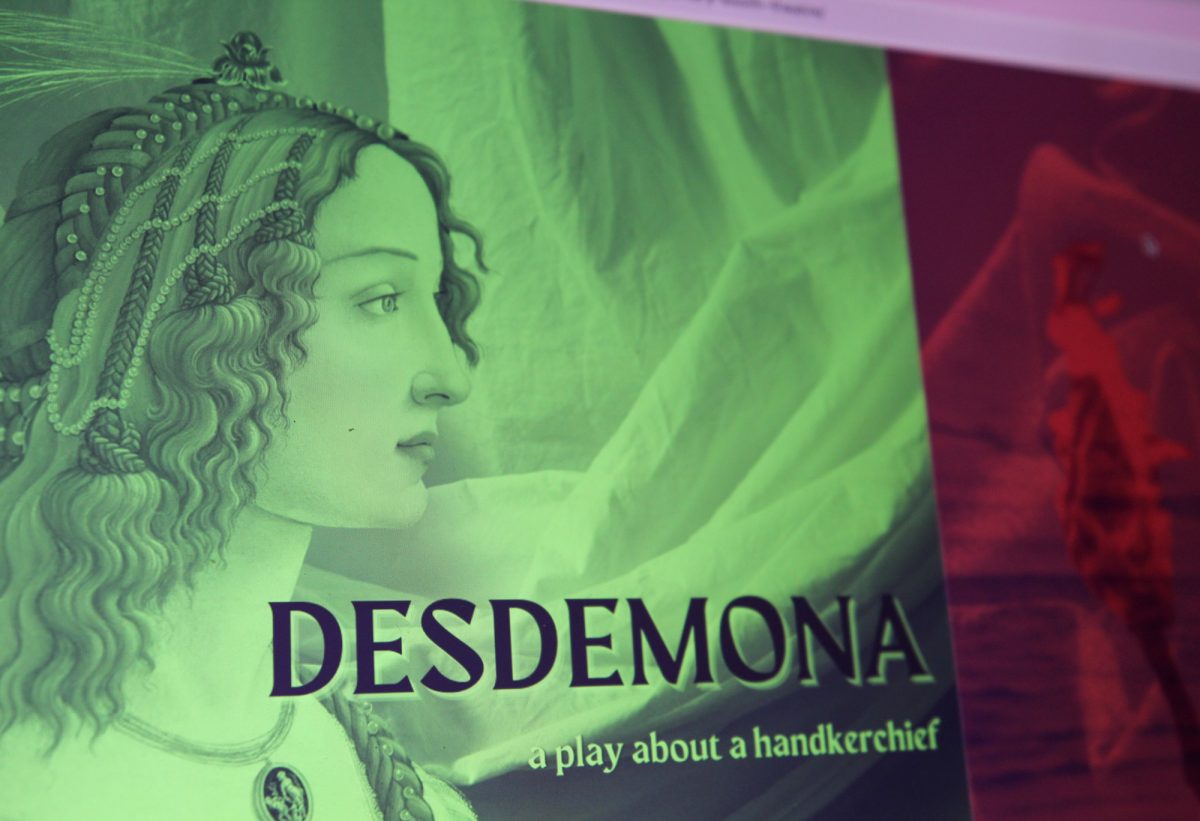It’s 1892 in Fall River, Massachusetts. The Bordens, a widowed father and his two daughters, are an affluent and successful family. Emma and Lizzie are well-educated, practicing Christians, involved in local philanthropy and community projects.

But soon after Mr. Borden remarries, he and his wife are found brutally murdered in their home, leaving the inhabitants of Fall River utterly perplexed. All signs point to Lizzie, but in a shocking trial the 32-year-old woman is acquitted, making her the subject of rumors and ostracization until her death.
Take this mysterious American legend, add an original pop-punk score, and you’ve got a hit.
“Lizzie: The Musical” was written by Steven Cheslik-DeMeyer, Tim Maner and Alan Stevens Hewitt, and originally debuted in 2009 in New York City. The dramatic retelling of the Lizzie Borden story plays into the speculation surrounding the murders, exploring motivations such as sexual abuse, female oppression, insanity and forbidden romance.
The show was performed and produced by STAMP, the College of Fine Arts’ Senior Theater Arts Major Productions, led by director Emma Cavage. The musical starred Grace Goble as Lizzie Borden, Kendall Anne Mood as her sister Emma, Becca Freeman as the family maid and Bridget and Charlotte Weinman as Alice, Lizzie’s friend-turned-lover.
What truly made this show outstanding was the performances of these four actors.
Goble fed into the mystery surrounding Lizzie incredibly, developing her from a shy young woman to a terrifying murderer as the show progressed. She did an amazing job at capturing the piercing stare of the tortured young woman she was playing.
The chemistry between Lizzie and Alice was a highlight of the performance. In each of Goble and Weinman’s scenes, they encapsulated the nuance behind what was at the time — a disgraceful attraction. The sexual tension between the two characters led to a powerful kiss in the first of two acts, which was met by an eruption of applause by the audience.
Weinman’s portrayal of Alice was especially on point by perfectly reflecting the character’s shyness and innocence. Never falling out of character, she mastered the sweet nature of the character not only through her effortlessly soft vocals, but in her doe-eyed expression and feathery composure.
Mood took a different approach when embodying Emma, the older Borden sister, bringing an equal balance of sass and psycho to the role. Dressed in all black, Emma’s frantic nature was an audience favorite, exemplified in the song she shared with her sister, “What the F*ck Now, Lizzie?”
Mood’s voice was extremely versatile throughout the show, allowing her to achieve both the nasally sarcasm and maniacal laughter her dialogue and lyrics warranted.
Last but certainly not least, Freeman deserves a true standing ovation for the power and sheer mania she brought to her role as Bridget. Her exaggerated Irish accent brought ample comedic relief to the story, without sacrificing the nuance of her character. Her powerful vocals, which often grew into screams, beautifully complimented the show’s rock combo score.
Freeman set the stage wonderfully in her spirited interpretation of “The House of Borden,” where she seemed to explore every square inch of the small theater — jumping onto the band’s elevated platform, stomping around aggressively and engaging with the audience.
It was clear she would be the show’s driving force when she crouched down in front of an audience member and belted out lyrics several inches from his face, which he welcomed, thrashing his head and singing along.
The cast and crew took advantage of the small theater that housed their performance by truly making the audience a part of the show. Viewers were seated in two sections, and a raised platform in between them was used as a sort of addendum to the stage.
The set, designed by Danielle DeLaFuente, transformed the musical into an immersive experience. Throughout the play, the actresses tore paper off the walls in a rage, and drew on the walls in chalk. At one point, Freeman as Bridget even blew a powdery substance into the crowd when fixing Lizzie’s tea, which created an eerie fog as it dispersed throughout the theater.
Maia Soltis deserves a special shout out for her costume design, which was fittingly pop-punk inspired, but not too dated, and included slight changes between the two acts, reflecting the growing intensity of the plot. The lighting design by McKenna Ebert achieved similar success, varying in color and intensity and strobing along to the blaring rock music.
If the earplugs the audience was offered at the beginning of the show are any indication, it was quite a unique musical experience, nothing short of a crowd pleaser.























































































































